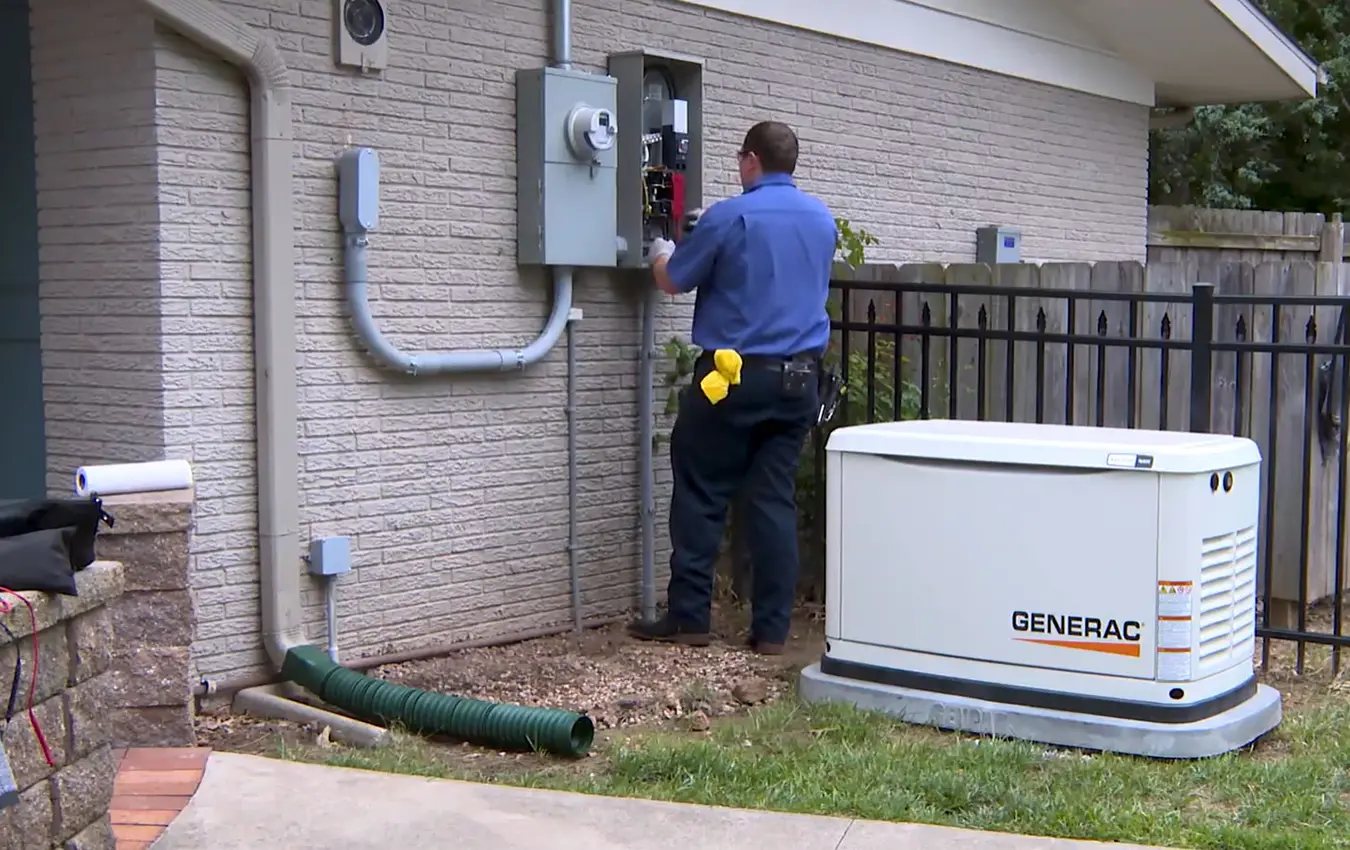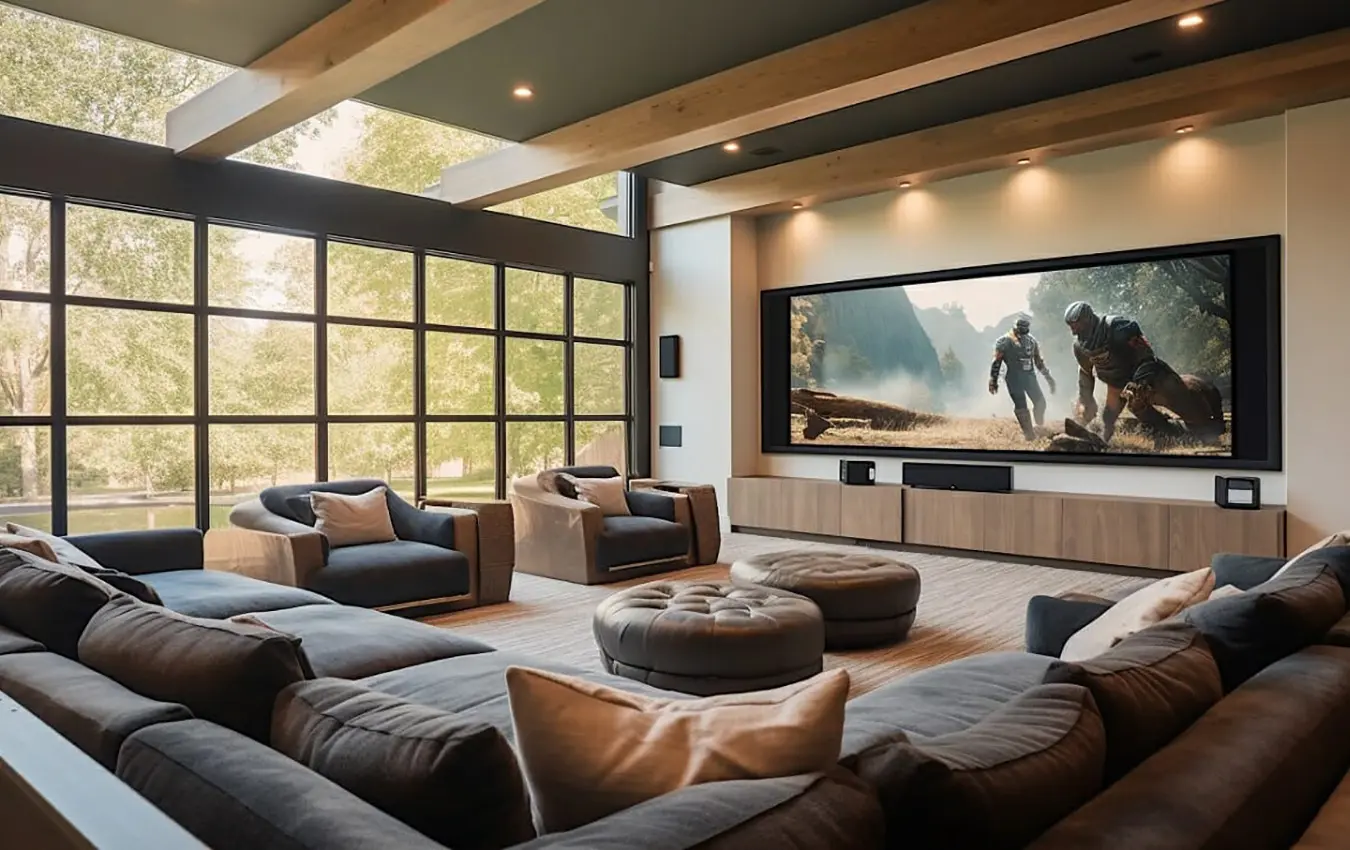Do you want to install electrical wiring in your house? Whether you’re building a new home, renovating an old one, or simply upgrading your electrical system, you need to know the basics of electrical wiring of home.
But how do you install electrical wiring in a house? What are the components involved, the steps to follow, and the safety precautions to take? And should you hire a professional electrician or do it yourself? In this article, we’ll answer all these questions and more. We’ll provide you with expert advice on installing electrical wiring in a house, from planning to execution. We’ll also cover the importance of following electrical codes and regulations, especially in South Florida, where storms and hurricanes pose a serious threat to electrical systems. Let’s get started!
Understanding Electrical Wiring
Electrical wiring of home is a system of insulated wires and related devices like switches, distribution boards, sockets, and light fittings, used to distribute electricity in a building. The primary purpose of electrical wiring is to provide a safe and efficient means of supplying electrical power to every corner of your home.
Components Involved in Electrical Wiring
Understanding the components involved in electrical wiring can help homeowners make informed decisions about their home’s electrical systems. These include:
- Wires and Cables: These are the physical mediums through which electricity travels in a house. They come in various sizes, or gauges, with specific ones required for certain types of installations.
- Circuit Breakers: These are safety devices designed to protect an electrical circuit from damage caused by overload or short circuit. When the current flowing through a circuit exceeds its rating, the circuit breaker trips and disconnects the power supply.
- Outlets and Switches: Outlets, also known as receptacles, provide points where you can plug in electrical devices. Switches, on the other hand, allow you to control the power to these devices.
Planning for Electrical Wiring in a House
Planning is a crucial step in installing electrical wiring in a house. Now, we’ll guide you through assessing your electrical needs and creating a strategic wiring plan.
Assessing Electrical Needs
Before diving into the electrical wiring process, assessing your electrical needs accurately is essential.
- Determining Power Requirements: Start by listing all the electrical appliances and devices you’ll be using in your home. Consider their power ratings to estimate the total electrical load. This will help you determine the capacity of your electrical system.
- Identifying the Number and Location of Outlets and Switches: Consider where you’ll need power in your home. Plan for outlets near places where you’ll use appliances or charge devices. Don’t forget about switches for controlling lights and certain appliances.
Creating an Electrical Wiring Plan
With a clear understanding of your electrical needs, it’s time to create an electrical wiring plan.
- Designing a Safe and Efficient Layout: Your wiring layout should be logical, safe, and efficient. Ensure that high-power appliances are distributed across several circuits to avoid overloading.
- Considering Future Expansions and Upgrades: Homes evolve, and so do our electrical needs. When planning, leave room for potential future upgrades or expansions. This could include additional outlets, lighting options, or even home automation systems.
Are you ready to upgrade your home’s electrical system? Look no further than Premier Electrical Services, your trusted partner in South Florida for all your wiring needs. Our team of licensed and professional electricians is dedicated to providing top-notch service, ensuring your home’s wiring is safe, efficient, and up-to-code.
Don’t compromise on safety or quality. Connect with us today at 954-900-1696. Your home deserves nothing but the best, and that’s what we deliver!
Safety Precautions and Codes for Electrical Wiring
When it comes to electrical wiring of home, safety should be your top priority. Now, let’s talk about the importance of following electrical codes and regulations, particularly in South Florida, and essential safety precautions during installation.
Importance of Following Electrical Codes and Regulations
Electrical codes and regulations are established to ensure safety and prevent electrical hazards. These codes are especially stringent in South Florida due to the region’s vulnerability to storms and hurricanes. They aim to ensure that electrical systems can withstand severe weather conditions and provide reliable service. Adherence to these codes during installation is not just a legal requirement but a matter of safety and functionality.
Common Safety Precautions During Installation
Ensuring safety during the installation process is paramount. Here are some key precautions to follow:
- Shutting Off the Power Supply: Before starting any electrical work, always shut off the power supply from the main circuit breaker. This prevents accidental electrocution.
- Using Proper Tools and Equipment: Use insulated tools and wear rubber gloves and non-conductive shoes. These provide protection against accidental electric shocks.
- Grounding and Bonding Techniques: Grounding provides a safe path for electrical current to travel to the ground in case of a fault. Bonding, on the other hand, helps create a uniform electrical potential by connecting different parts of the electrical system.
Installing Electrical Wiring
Here are the basic steps involved in installing electrical wiring of home:
- Running Wires Through Walls and Ceilings: This involves creating pathways for your wires, which may require drilling holes in the studs of your walls and ceilings. Always take care to avoid existing plumbing or other electrical wires.
- Connecting Wires to Outlets and Switches: Once the wires are run, they need to be connected to outlets and switches. The black wire (hot) is connected to the brass screw, the white wire (neutral) to the silver screw, and the green or bare copper wire (ground) to the green screw.
- Properly Securing and Labeling Wiring: Secure wires with staples or cable ties but avoid making them too tight. All circuits should be clearly labeled on the panel for easy identification.
Tips for Dealing with Different Types of Walls and Surfaces
Different wall materials require different techniques:
- Drywall: Drywall is relatively easy to work with. Use a drywall saw to cut openings for boxes, and a drill to create pathways for wires.
- Masonry: Masonry walls require special masonry drill bits. When running conduit, use masonry anchors to secure it.
- Plaster: Plaster walls can be brittle and prone to cracking, so work carefully. Use a jab saw to cut openings and protect the surrounding area to prevent damage.
While installing electrical wiring can be a DIY project for some, it’s often best left to professionals due to the complexity and inherent safety risks. Always follow local codes and regulations, and when in doubt, consult a professional.
Hiring a Professional Electrician vs. DIY Approach
When it comes to electrical wiring in your home, there’s always the question of whether to bring in a professional electrician or take the do-it-yourself (DIY) route. Let’s explore the pros and cons of both options.
Pros and Cons of Hiring an Electrician
Hiring a professional electrician can have several advantages:
- Expertise: An electrician brings a wealth of knowledge and experience, ensuring the job is done correctly and safely.
- Time-Saving: Professionals can complete the job more quickly than a DIY-er might be able to.
- Guarantee: Most electrical work performed by professionals comes with a warranty.
However, there are also some potential drawbacks:
- Cost: Hiring a professional can be expensive, especially for larger projects.
- Availability: Depending on their schedule, you may have to wait for an electrician to become available.
Factors to Consider when Deciding Between DIY and Professional Help
When deciding between a DIY approach and hiring an electrician, consider the following factors:
- Complexity of the Job: Simple tasks like replacing an outlet may be suitable for DIY, but complex tasks like rewiring a house should be left to professionals.
- Safety: Working with electricity can be dangerous. If you’re not confident in your ability to do the job safely, hire a professional.
- Local Codes and Permits: Some electrical work requires permits and must meet local building codes. A professional will know how to navigate these requirements.
Important Considerations for those Choosing the DIY Approach
If you decide to go the DIY route, keep these considerations in mind:
- Education: Make sure you understand what you’re doing before you start. There are plenty of resources available to help you learn, including books, online tutorials, and classes at your local community center.
- Tools and Equipment: You’ll need the right tools for the job, which can be an additional expense.
- Safety Precautions: Always turn off the power before starting work, use insulated tools, and wear protective gear.
Whether you choose to hire a professional or do it yourself depends on several factors, including the complexity of the job, your comfort level with electrical work, and your budget. Always prioritize safety, no matter which route you choose.
Conclusion
In this article, we covered the basics of electrical wiring in a house, from planning to installation. We also discussed the importance of safety and codes, and the pros and cons of hiring a professional or doing it yourself. We hope this article helped you understand how to install electrical wiring in a house, and what to consider before you start. If you need a professional service to install electrical wiring in your house, contact Premier Electrical Service today for a free estimate and consultation. Dial: 954-900-1696.
Check out the latest news:
- 10 Electrical Hazards of DIY Generator Installation
- Transform Your Living Space: The Benefits of Home Theater Systems
- How to Choose the Right Lighting Fixtures for Your Home or Business
- Don’t Be Left in the Dark: Why Homeowners Should Consider Premier Electrical Services for Backup Generator Installation
- Residential Electrical Wiring: Why You Need a Professional Electrician






